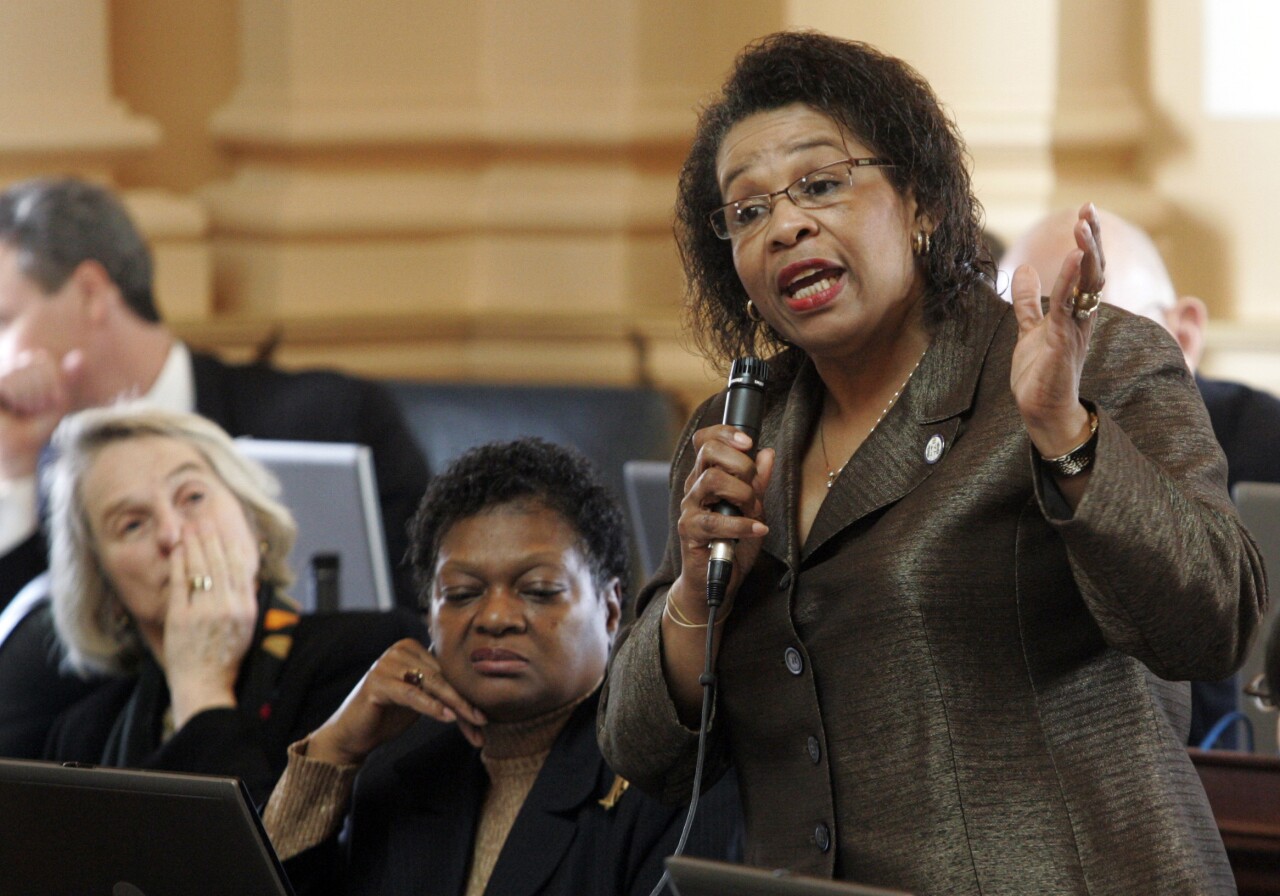FALLS CHURCH, Va. — Proposed redistricting maps under consideration by the Virginia Supreme Court would constitute a significant reduction in the number of majority Black districts in the General Assembly.
How to protect minority voting rights has been one of the key points of contention in this redistricting cycle, as well as past ones, in Virginia. Figuring out a solution is a task that falls to the state Supreme Court, which began holding public hearings on the maps Wednesday.
The traditional method of ensuring Black representation has been to require districts be drawn with a majority Black population. More recently, though, some experts - especially on the Democratic side - have suggested that majority Black districts unnecessarily pack too many Black voters into one district, diluting their influence in surrounding districts.
In this redistricting cycle, the task of drawing maps first fell to a newly created bipartisan redistricting commission. During public debates, Democrats on the committee pushed for the creation of “coalition districts,” in which a district with, say, a 40% African American population can form coalitions with other minorities and white voters so that communities of color can elect their candidate of choice.
Republicans on the commission favored the traditional focus on creating majority Black districts. The two sides failed to reach consensus on this or any other issue. Because the commission could not agree on any maps, state law now requires the Virginia Supreme Court to draw them.
The maps submitted to the court last week contain only seven majority Black legislative districts in the two chambers combined - far fewer than the 11 majority Black districts that now exist. Proposals submitted earlier to the redistricting commission would have created anywhere from 10 to 16 districts had they been adopted, according to an analysis from the nonpartisan Virginia Public Access Project.
But the maps submitted to the court create a much higher number of majority-minority districts, those in which Blacks, Hispanics and Asians combined represent more than 50% of the population in a given district.
The special masters who submitted the maps, Bernard Grofman and Sean Trende, told the court in a memo that the commission "drew districts that would elect the candidate of choice of a minority group only if the district could be drawn in a compact fashion that did not needlessly split counties.”
They said they were concerned that the maps would be subject to a legal challenge if they drew them with racial considerations in mind, so they drew them without regard to race and then evaluated the racial composition after the fact.
Grofman and Trende said they weren't bothered by the fact that the new maps contained so few majority Black districts because they instead emphasized “districts where minority groups would have the ability to elect their candidates of choice.”

Rebecca Green, a professor at William and Mary Law School with expertise in redistricting, said it's not surprising that the proposed maps reduce the number of majority Black districts. For several redistricting cycles, states were careful to maintain or increase the number of Black districts to avoid a lawsuit. That legal framework inflated the number of such districts, she said.
But the U.S. Supreme Court in 2013 struck down parts of the Voting Rights Act, and states are no longer obligated to maintain specific numbers of majority Black districts. States are now looking for different ways to comply with the law, and in some cases are embracing the creation of coalition districts.
From both a legal and a political standpoint, states have to walk a careful tightrope: Putting too many Black voters in a district leaves a state vulnerable to a charge of “packing” Black voters. Putting too few in a district can lead to charges of “cracking” Black voters.
While many Democrats have leaned more recently toward creating coalition districts instead of majority Black districts, last month's legislative elections raise questions about the efficacy of that approach. Two Black delegates, Lashrecse Aird and Roslyn Tyler, lost elections in their districts in southside Virginia, a part of the state that exhibits some of the most extreme patterns of racially polarized voting.
Both Aird and Tyler had their districts redrawn in 2018 after a federal court found that Black voters were unnecessarily packed into a small number of districts in their part of the state. The redrawn maps significantly reduced the Democratic tilt in both of their districts.
The special master who oversaw the redrawn maps in 2018 was Grofman.
Aird declined comment on this story through her office, while Tyler's office did not respond to an email requesting comment.
Former Virginia Gov. L. Douglas Wilder, the nation's first Black elected governor, said in an interview that Democrats have done a poor job of truly looking out for Black voters’ interests, ignoring the long and difficult history of electing African Americans in a Southern state. And he said turning over the task of drawing the maps to a supposedly independent commission and now to the court has just exacerbated the problem.
“Who speaks for those people who have been historically denied through the centuries in Virginia? What groups have you heard coming forth?” Wilder asked. “I'll wait.”



